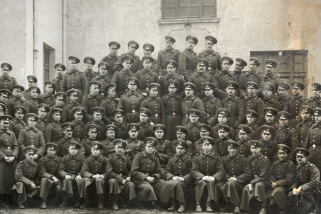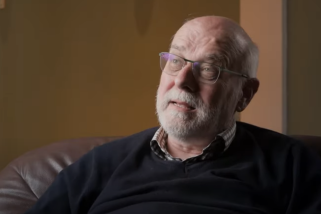Churches during the Cold War: Communications and the Perception of the “Other”
Deadline for Proposal: December 1, 2015
Deadline for Final Submission: November 1, 2016
Churches during the Cold War: Communications and the Perception of the “Other” Call for Papers
The quarterly peer-reviewed journal State, Religion and Church in Russia and Worldwide / Gosudarstvo, religiia,
tserkov’ v Rossii i za rubezhom (http://religion.rane.ru/?q=en/main) will dedicate a special issue in 2017 to the theme “Churches during the Cold War.” The editors are particularly interested in exploring how the Cold War influenced the relations between Christian churches and individual believers from the two conflicting “worlds.”
Since the end of the Cold War, both the ideological and methodological approaches of its study have shifted from a
politicized emphasis on conflict to a more nuanced emphasis on contacts and mutual interactions over, through, and in defiance of the Iron Curtain. Today, as never before, the study of this war of ideological systems, texts, and symbols – an information war as it was – became relevant again.
The religious aspect of Cold War history has been relatively understudied. However, it was one of the key areas of that history, as religious associations and structures were full-fledged actors in the Cold War drama. Indeed, the opposition of religion and atheism was seen as a determining factor in the competition of the two “worlds”. Western states used the protection of religious freedom as a powerful political leverage; the Soviet bloc saw religion as an ideological and political instrument of influence. Despite official rhetoric and policies, religious institutions and believers maintained direct contacts across borders. Moreover, a complex dynamic of secularization and religious revivals continued on both sides of the Iron Curtain, amidst heated scholarly debates on these matters.
The special issue of Gosudarstvo, religiia, tserkov’ will address the following questions: What stereotypes, texts, and
ideas concerning “the other” were crucial for both “camps”? How did these stereotypes influence the relations between religious groups? How did the informational isolation in Communist countries shape their perception of “the other”?
What was the role of global religious structures, such as the World Council of Churches, the Conference of European
Churches, the Baptist World Alliance, or the Vatican, which had to elaborate special position to adapt Christianity to the bipolar world?
The journal State, Religion and Church invites potential participants to submit a paper proposal by December 1,
2015 both to the editorial address religion@rane.ru and to the address of guest editors – beliacovana@gmail.com,
religion07@rambler.ru.
The proposal should include the name of the proposed article, an abstract (1200-1500 characters, including spaces), and a brief CV.
The deadline for submitting the completed article will be November 1, 2016. The length of the article should be around
40,000 characters (including spaces), or roughly 6000-7000 words.
2
We will accept proposals and articles in Russian, English, or German.
Editors of this special issue:
Nadezhda Beliakova – Senior Researcher at the Center of Religious and Church History, Institute of World History,
Russian Academy of Sciences, Russia. beliacovana@gmail.com
Alexey Beglov – Senior Researcher, Institute of World History, Russian Academy of Sciences. religion07@rambler.ru











